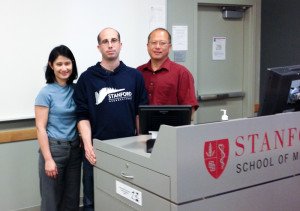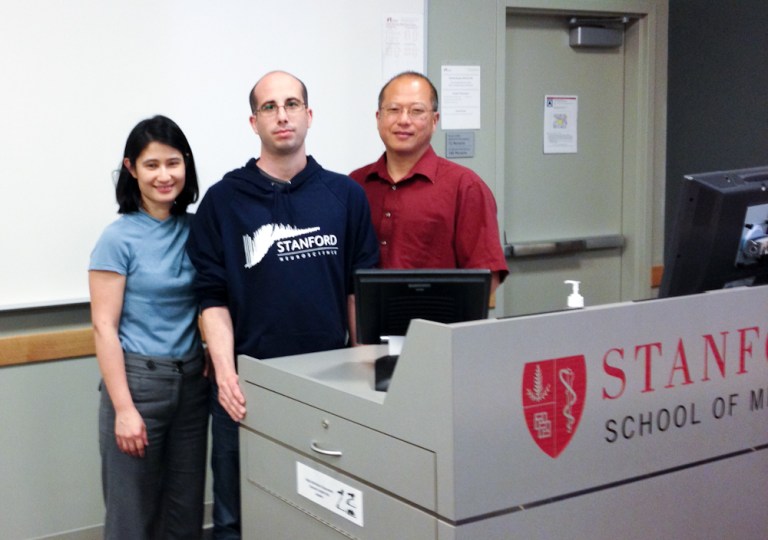A controversial School of Medicine course has given hundreds of students the opportunity to learn about genetics in a unique format: through an analysis of their own genotype.
In Genetics 210: Genomics and Personalized Medicine, students are taught how to examine a DNA sequence and given the option of studying their own genetic data. This personal genotyping can reveal a student’s risk level for different diseases or previously unknown information about his or her ancestry.

“I want to learn about me and what’s coming up,” explained Kateryna Kozyrytska, a biochemistry doctoral candidate currently enrolled in the class. “It’s more interesting to look at your data than at some random data.”
Before the class first opened for enrollment, members of the Joint Genotyping Task Force Committee– composed of philosophers, ethicists, physicians and other faculty members– met to discuss the implications of the course.
According to Professor of Development Biology and of Genetics Stuart Kim, one of the course directors, faculty members worried that genetic discoveries could cause students additional stress. They eventually concluded, however, that the course’s benefits outweighed the disadvantages.
“We do believe that information is power, and that the power from knowing counterbalances the stress from the knowing,” he said. “We made a kind of philosophical decision that knowledge is power, and that students should embrace the knowledge instead of staying ignorant.”
Enrolled students attend several informed consent sessions about the legal and ethical implications of genotyping before the course begins and can choose to study public genotype files instead of their own DNA. However, a survey of the first Genetics 210 class revealed that students who worked with their own genetic material outperformed students who used public files.
Andrew Roos M.S. ’14 Ph.D. ’14, who took the class with his twin brother Thomas Roos M.S. ’12 Ph.D. ’18, said that the decision to get genotyped “helped with my engagement with the [course] material.”
Both Andrew and Thomas used the results from the genotyping to modify their training regimens in preparing for triathlons. Andrew said that the modifications have helped him avoid injuries that he previously struggled with.
“Knowing my history of previous injuries, once I saw my genetics, it confirmed that– [for] the injuries that I had gotten previously– I was at a genetic risk for those injuries,” Andrew said.
Though Roos had a positive experience with genotyping, other students expressed less satisfaction with their experience.
Kim said that students who are disturbed by the genotyping results can discuss the results with a genetic counselor from 23andme, the company that provides the genotyping kits, or a University psychiatrist. According to Kim, one student spoke to a genetic counselor during the first year of the class.
While students are not expected to discuss personal information about their genotypes, Kim noted that in recent years an increasing number of students have chosen to share their discoveries with the class.
“I can remember the two students who had the most Neanderthal DNA jumping up and down saying they were the most Neanderthal,” Kim said.
Although the course was initially designed for medical students, Kim said that the class is now comprised of graduate students, Ph.D. candidates and even undergraduates. He attributed the diverse range of students to the course material’s new prominence in investigative research, noting genomics’ practical application in fields like prescribing appropriate drug dosages.
“It’s absolutely a fascinating and exploding area of research right now,” Kim said, adding that genotypes “allow us to analyze humans and what makes us different in being human.”
Even as interest surges, however, some– like Kozyrytska’s family in Ukraine– are less enthusiastic about the potential for discovery that genotyping offers.
“To them, it felt that if there’s no obvious solution to the problem you learn about, then you may as not well learn about the problem, because you can’t do anything about it,” Kozyrytska said.
